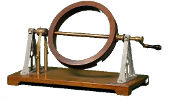» Einthoven String Galvanometer (0154)
Immagini
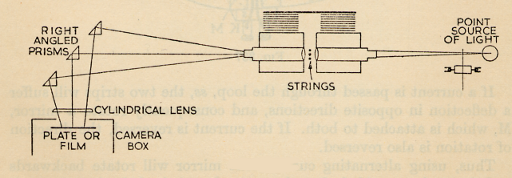
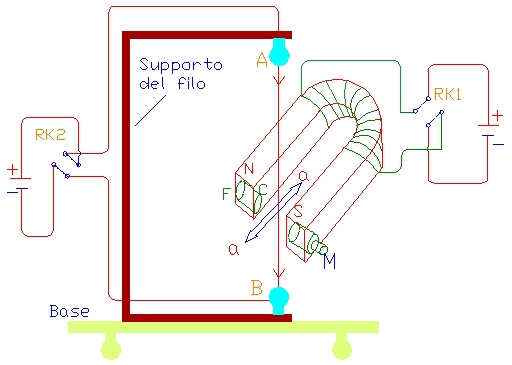
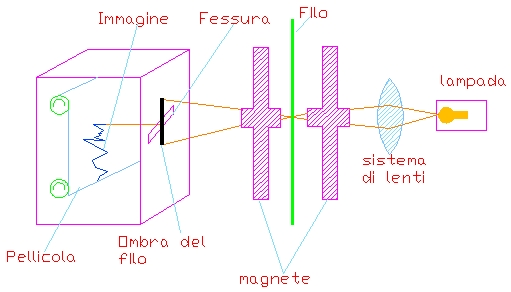
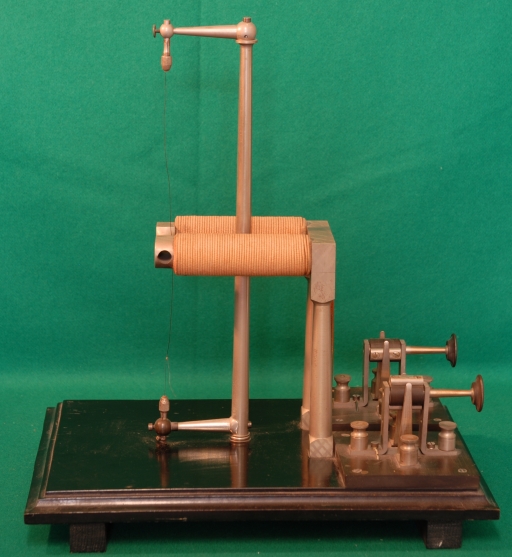
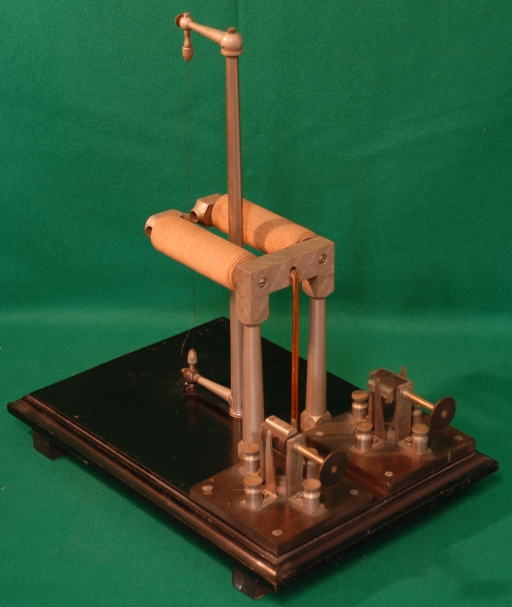
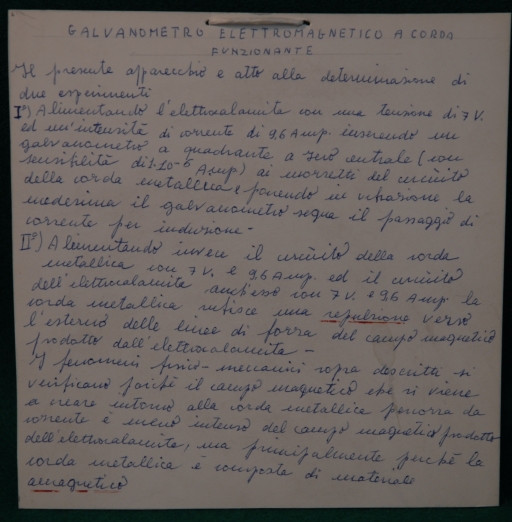
DESCRIPTION
Exhibit 154 is a galvanometer based on the movement of a conducting wire in a magnetic field as invented by Einthoven. The example in the museum has a solid wood base with two brass columns each of which supports a coil of about 160 turns to generate a magnetic field. Between the pole pieces of the magnets there is a conducting wire of platinum or tungsten maintained in tension by its supports A above and B below the pole pieces. The latter are perforated in the direction perpendicular to the magnetic field to permit observation of the wire. When there is current in the wire, the magnetic field displaces the wire according to the Lorentz force VxB in the direction normal to the field. The response time of this galvanometer is very short due to the tension in the wire and it returns to the equilibrium position in a fraction of a second (around 10-4 sec). Another interesting characteristic is the sensitivity, around 10-11 ampere.These characteristics of the Einthoven galvanometer were used by the inventor himself to record very short and weak current pulses in cardiac research and win him the Nobel prize in medicine in 1924. To record the currents which displaced the wire, a light source was focused on the wire by an lens which caused the shadow of the wire to appear on a screen (fig. 6). The screen was substituted with a slit leading into a camera box where the photographic emulsion was rolled in one sense while the deflections of the shadow activated the film in the other sense to record the current pulses. The camera box incorporated a timing mechanism which marked the film 25 times per second (see exhibit 569).
BIBLIOGRAPHY
- [1] Per Notizie su Einthoven vedi:
- [2] B.L. WORSNOP and H.T. FLINT, "ADVANCED PRACTICAL PHYSICS FOR STUDENTS",Ed. 1961, Asia Publishing House, New Delhi, India. PP. 524-526
- [3] URL [ http://www.sil.si.edu/digitalcollections/trade-literature/scientific-instruments/files/51687/imagepages/image28.htm ]
Dati Catalografici
| Data di costruzione: | --- |
|---|---|
| Data di carico: | 1923-06-29 |
| Nr. Inventario: | 4064 (Generale dal 1874) |
| Costruttore: | Allocchio Bacchini & C. |
| Materiale: | metallo, rame, legno |
| Dimensioni: | 35 cm x 24,5 cm x 38 cm; Bobine: lunghezza 10,5 cm, diametro 3,4 cm; Lunghezza del supporto del filo: 34 cm |
| Conservazione: | buono (Il filo è rotto. Mancano: 1. Microscopio 2. Marcatore di tempi. 3. Il motore per azionare il movimento della pellicola. ) |
